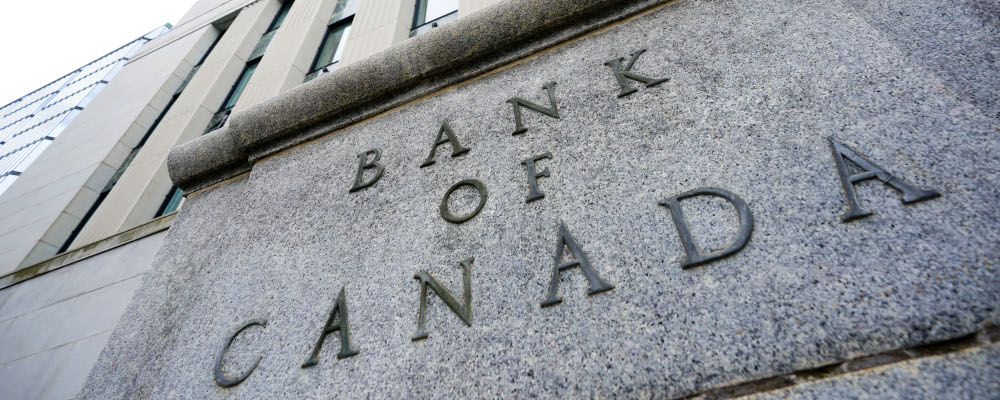Today, we use cash for only about 10 percent of transactions—down from 40 percent ten years ago. Digital options dominate, both here and abroad.
It’s little wonder central banks want to stay ahead. Currently, over 70 countries are exploring the idea of issuing digital currencies—called “central bank digital currencies”. Some have even moved ahead, with 18 countries launching pilot projects and 11 already having them in circulation.
Critics fear such currencies are a new tool for surveillance and control. Just look at the replies to a heavily ratioed tweet by the Bank of Canada seeking public feedback. Concerns include that it would be a “tool for tyrants”, the start of “digital slavery”, a “gateway to misery and coerced obedience”, and more.
This goes beyond Twitter. Alberta Premier Danielle Smith opposes them and fears it will provide a new way to tax our transactions. And federal opposition leader Pierre Poilievre has committed to banning the Bank of Canada from introducing one.
But what exactly is a central bank digital currency? And should Canadians be excited or fearful? From my perspective: it’s nothing new, far more boring than it sounds, and both proponents and opponents alike are widely missing the mark.
What is a central bank digital currency?
Unfortunately, a clear dispassionate answer to this question is hard to come by. The Bank of Canada’s own video trying to explain the concept falls far short. Yes, it’s a digital dollar. Thanks for that. But electronic payments are nothing new.
The critical point is that it’s a digital dollar issued by the central bank. Right now, you don’t get your digital dollars from the Bank of Canada, you get them from banks. That’s different. In our current “fractional reserve” system, commercial banks can create their own money. Each loan they make is effectively just that, and it’s mostly all digital.
But even a Bank of Canada-issued digital dollar is nothing new. We’ve had them for many years. Currently, there are roughly $250 billion of them right now. We just call it something different: deposits at the Bank of Canada.
Here’s the catch, and the key to understanding most digital currency ideas: neither you nor I have a deposit at the Bank of Canada. Only a tiny handful of large financial institutions do. Even Canadian Western Bank and Manulife Bank have to go through a partner with direct access to the system (they use RBC).
The best way to think about central bank digital currencies is not as some shiny/scary new thing, but merely as a proposal to broaden access to deposits at the Bank of Canada. That’s it.
Individual deposits at the Bank of Canada?
There might be benefits for some.
Our system can be complicated for new players, for example. Consider the startup Neo Financial in Calgary. To settle payments, they go through Concentra Bank, which in turn goes through Central 1.If you have not heard of Central 1 before, you’re not alone. They are the backbone of credit unions in B.C. and Ontario, so are important but not visible directly to most of the public.
Broadening direct access to the central bank may boost FinTech innovation by eliminating this complexity. It might also potentially make it easier for the Bank of Canada to buy and sell assets. They could buy or sell a bond directly with Neo, for example, instead of always with the big direct players.
None of this is really about a newfangled digital currency, though. It’s about improving the wholesale side of our banking system. With billions of transactions worth trillions of dollars, innovations here are potentially valuable and already ongoing.Some CBDC folks talk about “wholesale CBDC”, but I think this is terrible framing and needlessly stokes misunderstanding. In Canada, just call it Lynx 2.0 or something else equally boring.
Risk-free digital dollars already exist
What about individuals? Would access to central bank deposits be valuable? Maybe in some countries, but not Canada.
Each electronic dollar you or I currently hold is not technically backed by the Bank of Canada. It’s instead a liability of the private commercial bank. If the bank fails, you might lose those digital dollars. A “central bank digital currency” would be a liability of the central bank, which cannot fail.Of course, a central bank can dilute the value of your dollars by inflating price levels, but that’s a separate issue.
This might matter in countries where bank failures are a genuine risk. But that’s not Canada.
Our highly regulated and concentrated banking system is, in effect, one with risk-free digital dollars already because all deposits at major banks are fully protected. The worst-case scenario for the big banks is we nationalize them; they are literally not permitted to fail.
Deposits at smaller institutions are also protected. The last time we saw one of them fail was in the 1980s, and every single dollar of deposits was covered—even above the CDIC limit. For the tiny risk that future depositors might lose, the solution is not direct individual access to some direct central bank liability but to simply expand deposit insurance.

Privacy concerns and social control
All this aside, what if we did allow individuals to have a deposit with the Bank of Canada? Would this move us towards a dystopian hellscape where privacy no longer exists and social control is everywhere? Hardly.
A payments system is little more than sending text messages. An electronic version of asking your bank to transfer some amount from your account to someone else’s. The technical infrastructure that does the job is managed by a government entity and overseen by the Bank of Canada. All transactions are already recorded and tracked. This is not a privacy concern because we have strong legal frameworks and institutions to protect against that. We would (and should!) have the same for any other future innovation that makes payments easier.
If one has concerns about the state of privacy laws in Canada, then make that case directly.
As for social control, some fear a digital currency would be able to punish or reward specific behaviour. But this too is not new! We tax some choices and subsidize others all the time, for better or worse, and have for centuries. Peter the Great didn’t need a blockchain to tax beards.
Of course, technology can affect governments’ ability to implement such measures, but each would need to go through Parliament, as it does today.
Takeaway
At the end of the day, it’s not at all clear what problem proponents of central bank digital currencies are trying to solve. Or even what concretely is meant by the label. Critiques are equally unclear.
There is lots of ongoing research on the topic. And that’s fine. The Bank of Canada is responsible for overseeing Canada’s payments system, so it should naturally be involved in researching new innovations. Private sector firms are too, as they should be.
But most talk of a new digital currency is misplaced. In almost every way that matters, it already exists. Proposals to expand access to it or to improve back-end payments systems is a far more boring—but a far more accurate and helpful—way to think about it.
Recommended for You

Canada’s economy will finally be in recession and AI takes over our classrooms: The Hub’s can’t-miss predictions for 2025

Bernardo Gogna: How to build the airport of tomorrow, today

‘Politics first and the country second’: Experts react to the finance minister’s shocking resignation, the state of the Liberal government, and the Fall Economic Statement

‘Political Gimmicks’: The Hub’s take on Freeland’s Shakespearian betrayal of a resignation letter




